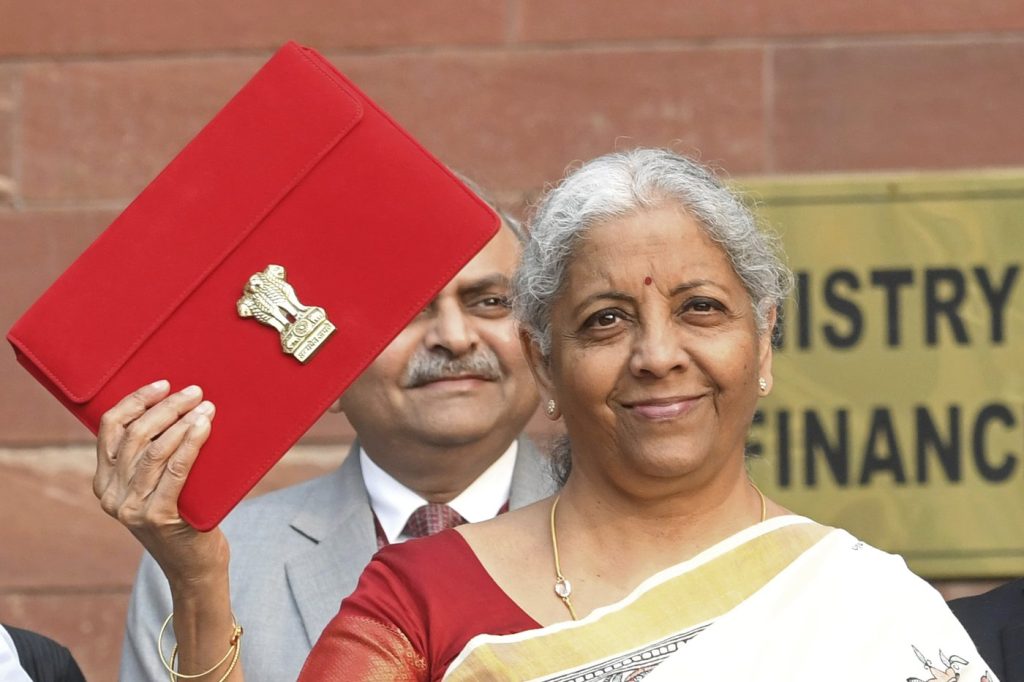NEW DELHI (AP) – On Saturday, February 1, 2025, Indian Prime Minister Narendra Modi's government unveiled its annual budget during a session in Parliament. The budget aims to attract the salaried middle class through tax cuts and aims to stimulate economic growth by enhancing funding for agriculture and manufacturing sectors.
During her budget speech, Finance Minister Nirmala Sitharaman emphasized the government's commitment to promoting private investment, boosting the agricultural sector, and increasing the disposable income for India’s middle class. She stated, "The focus of the budget is taking everyone together on an inclusive path," while setting a target for a fiscal deficit of 4.4% of the gross domestic product (GDP) for the financial year 2025-26.
Despite being the world’s fifth-largest economy, India is anticipated to experience its slowest growth in four years due to struggling manufacturing, ongoing food inflation, stagnant job growth, and subdued urban consumption. The country's chief economic advisor, as reported prior to the budget release, has projected GDP growth of 6.3% to 6.8% for the next fiscal year.
One of the budget’s key highlights is the introduction of income tax cuts aimed at the salaried middle class. Sitharaman announced an increase in the income tax exemption threshold, raising it from $8,074 to $14,800. She further committed to proposing a new income tax bill the following week to bring about "transformative reforms in taxation," which she claims will leave more disposable income in the hands of the middle class, thus encouraging household consumption, savings, and investment.
PM Modi, now serving his third term, faces increasing pressure to address the concerns of the middle class and create more job opportunities to ensure sustainable economic growth. Economists have urged the government to reduce personal income taxes and implement job creation initiatives due to rising unemployment rates. Notably, the Center for Monitoring the Indian Economy reported that youth unemployment stood at 7.5% in January, highlighting the challenge of providing jobs in a nation of over 1.4 billion people.
In an effort to bolster the agriculture sector, the government plans to initiate a comprehensive program aimed at promoting high-yield crops, with a particular focus on pulses and cotton. Sitharaman noted that this initiative would target at least 17 million farmers and increase the limit for subsidized credit available to them from $3,460 to $5,767. Furthermore, the government intends to formally recognize gig workers, providing them with identity cards and establishing a national registry, thereby granting them better access to healthcare and inclusion in welfare initiatives. Estimates from government think tank NITI Aayog suggest that India’s gig economy could create over 23 million jobs by 2030.
The budget also allocates resources for new startup funds, with the objective of fostering innovation in collaboration with the private sector and implementing programs that promote manufacturing and exports. Presently, manufacturing accounts for approximately 17% of India’s economy, falling short of the targeted 25%. In addition, significant investment is earmarked to enhance tourism-related employment across various Indian states, improving infrastructure, and connectivity.
Sitharaman unveiled a Nuclear Energy Mission aimed at facilitating India's transition to cleaner energy, with an ambitious goal of developing at least 100 GW of nuclear power by the year 2047. This initiative aligns with the government's broader strategy to support sustainable growth and energy efficiency in the nation.










